Children grow fast. They outgrow clothes, shoes, and even their favorite toys in just a few months. But what about their prosthetic limbs? Parents of children with prosthetics often ask, “How often does my child need a new prosthetic?” The answer depends on growth, activity levels, comfort, and wear and tear.
At Robobionics, we understand that a well-fitting prosthetic is essential for mobility, confidence, and independence. A prosthetic that no longer fits properly can cause discomfort, skin irritation, and difficulty moving. In this guide, we’ll explore how often a child’s prosthetic should be replaced and what signs parents should look for to ensure their child is always comfortable and active.
1. Why Do Children Need Frequent Prosthetic Replacements?
Unlike adults, children are constantly growing and changing. Their bones, muscles, and body structure evolve, which means their prosthetic limb must be adjusted or replaced regularly.
Rapid Growth and Changes in Limb Size
A child’s body grows at different rates, depending on age, genetics, and overall health. When a child’s limb grows, the prosthetic socket—the part that connects to their body—may become too tight or uncomfortable. If the socket no longer fits properly, it can lead to skin irritation, pain, and restricted movement.
In most cases, younger children need a prosthetic replacement every 6 to 12 months, while older children may require a new limb every 12 to 24 months. Regular check-ups with a prosthetist help ensure the limb remains comfortable and functional.
Increased Activity Levels and Wear and Tear
Children are naturally active. They run, jump, climb, and explore without thinking about how their prosthetic might be affected. Over time, constant movement and impact can cause wear and tear on the prosthetic limb.
A well-used prosthetic may develop cracks, loose joints, or reduced grip strength. If the limb becomes unstable or weak, it could affect balance, mobility, and confidence. In such cases, a replacement or repair is necessary to ensure safety and proper function.
Changing Functional Needs
As children grow, their interests and daily activities change. A toddler may need a simple, lightweight prosthetic, while a school-aged child may require a more advanced limb for writing, playing sports, or performing daily tasks.
A child’s prosthetic should match their activity level. If their current prosthetic no longer supports their needs, upgrading to a more functional or adaptable model may be the best option.
2. How Growth Stages Affect Prosthetic Replacement Frequency

A child’s age and growth stage play a significant role in how often they need a new prosthetic.
Infants and Toddlers (0-5 Years)
At this stage, children experience rapid growth, making frequent prosthetic adjustments necessary. A baby born with a limb difference or who undergoes an amputation may begin using a prosthetic by 6 to 12 months old. Since infants and toddlers grow quickly, their prosthetic often needs replacing every 6 to 12 months.
Because young children are still developing motor skills, their prosthetic must be lightweight, comfortable, and easy to use. Parents should monitor any signs of discomfort, redness, or difficulty using the limb, as these could indicate the need for a new prosthetic.
Children (6-12 Years)
Growth rates slow slightly during early childhood, but kids are still active and constantly developing. Prosthetic replacements may be needed every 12 to 18 months, depending on growth and activity level.
Children at this stage start using more advanced prosthetics for activities like writing, drawing, playing musical instruments, and sports. If their prosthetic limits their ability to participate in daily tasks, an upgrade may be required.
Teenagers (13-18 Years)
During adolescence, children experience another growth spurt. This can lead to changes in limb shape and size, making socket adjustments or complete replacements necessary every 12 to 24 months.
Teenagers also engage in more specialized activities, such as sports, fitness training, or technical tasks. If their prosthetic is not suitable for these activities, switching to a more advanced or customizable prosthetic can enhance mobility and performance.
3. Signs That a Child Needs a New Prosthetic
Parents should look for specific signs that indicate their child’s prosthetic is no longer fitting well or functioning properly.
1. The Prosthetic Feels Tight or Uncomfortable
If a prosthetic no longer fits correctly, children may complain of pain, irritation, or pressure. Parents might also notice red marks, swelling, or skin breakdown near the prosthetic socket.
A well-fitting prosthetic should feel comfortable and natural. If a child starts avoiding wearing their limb, it could be a sign that an adjustment or replacement is needed.
2. Difficulty Moving or Using the Prosthetic
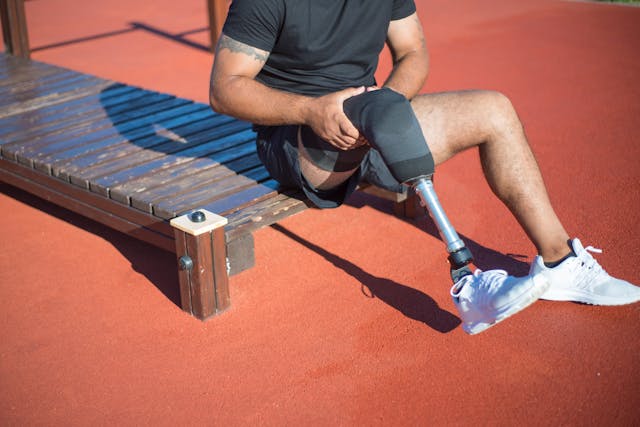
If a child struggles with walking, running, gripping objects, or performing tasks they could easily do before, their prosthetic may no longer be functioning properly. Over time, the limb may become loose, stiff, or less responsive, affecting movement.
Regular rehabilitation and prosthetist check-ups help ensure that the limb is always adjusted for optimal performance.
3. Visible Damage or Wear
A prosthetic that is cracked, worn down, or has loose parts can pose a safety risk. If the prosthetic has visible damage, it’s important to consult a prosthetist immediately for a replacement or repair.
Children are tough on their prosthetics, so choosing a durable, high-quality design ensures longer-lasting use and fewer replacements.
4. Making Prosthetic Replacements More Affordable and Accessible
The cost of frequent prosthetic replacements can be a concern for many families. Thankfully, advancements in prosthetic technology have made solutions more affordable, durable, and adaptable.
Modular and Adjustable Prosthetic Designs
Some modern prosthetics come with modular components, allowing for adjustments instead of complete replacements. Adjustable sockets and expandable limb designs help accommodate growth, reducing the need for frequent new prosthetics.
At Robobionics, we offer cost-effective prosthetics that grow with your child, ensuring they always have a comfortable, well-fitting limb without unnecessary expenses.
3D-Printed Prosthetics: A Game-Changer
3D-printed prosthetics have revolutionized affordability. These prosthetics are lighter, more customizable, and significantly cheaper than traditional models. With quick production times, replacements are faster and easier for families.
We specialize in 3D-printed pediatric prosthetics that provide top-quality function at a lower cost, ensuring every child has access to a prosthetic whenever they need one.
Financial Assistance and Insurance Options
Many families may be eligible for government aid, insurance coverage, and grants to help cover the cost of prosthetic replacements. In India, programs under Make in India and other initiatives support locally made prosthetic solutions, making high-quality limbs more accessible to families in need.
Parents should explore all available financial options to ensure their child gets the best prosthetic care without financial stress.
5. How to Extend the Life of a Child’s Prosthetic
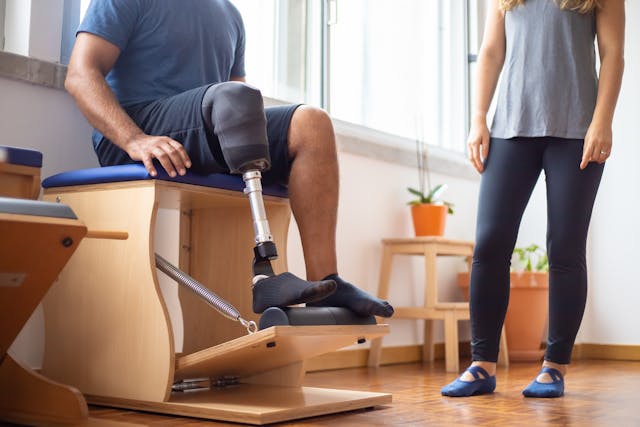
Although children outgrow prosthetics quickly, proper care and maintenance can help extend their usability, reduce frequent replacements, and ensure they remain comfortable for as long as possible.
Regular Adjustments and Refitting
Instead of replacing an entire prosthetic, sometimes minor adjustments can make it last longer. Prosthetists can modify the socket size, straps, or alignment to better match your child’s changing limb shape.
For example, some prosthetic designs come with expandable sockets, which can be widened slightly as the child grows. This helps delay the need for a full replacement while maintaining a snug and comfortable fit.
At Robobionics, we offer adjustable pediatric prosthetics that allow for gradual modifications, helping families save money and ensuring a better long-term fit.
Routine Care and Cleaning
Dirt, sweat, and moisture can weaken prosthetic materials over time. Regular cleaning of prosthetic sockets, liners, and moving parts helps prevent damage, bacterial infections, and discomfort.
- For lower-limb prosthetics, make sure the foot and knee joints remain free of dust and debris to prevent stiffness.
- For upper-limb prosthetics, check the grip strength and flexibility to ensure smooth movement.
- If the prosthetic has a soft liner or padding, wash it regularly to avoid skin irritation.
A well-maintained prosthetic lasts longer and stays comfortable for your child, reducing unnecessary replacements.
Choosing Durable and Adaptable Materials
Materials like carbon fiber, high-quality plastics, and lightweight metals provide better durability and withstand a child’s active lifestyle.
For growing children, 3D-printed prosthetics offer a cost-effective and easily replaceable solution. At Robobionics, we design strong yet lightweight prosthetic limbs using the latest materials to balance durability, flexibility, and comfort.
6. Preparing for a Prosthetic Replacement: A Smooth Transition for Your Child
When it’s time for a new prosthetic, preparing in advance helps make the transition easier and stress-free for both parents and children.
Talking to Your Child About the Change
Children might feel nervous or unsure about switching to a new prosthetic. Parents can help by explaining the benefits—such as improved fit, comfort, and new features that will make their prosthetic even better.
Encourage your child to express any concerns and involve them in the selection process. If they get to choose colors, designs, or new features, they are more likely to feel excited about the upgrade.
At Robobionics, we offer customized pediatric prosthetics with fun designs and colors to help children feel proud and confident in their prosthetic limb.
Gradually Adjusting to the New Prosthetic
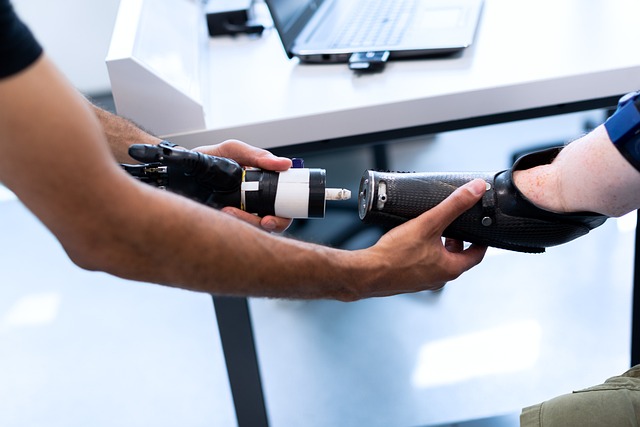
Switching to a new prosthetic may take time. It’s important to start slowly, allowing your child to get used to the new fit, weight, and movement before returning to full activity.
For children with lower-limb prosthetics, encourage them to practice standing, walking, and balancing before running or playing sports.
For upper-limb prosthetics, simple tasks like holding objects, writing, or playing with toys help strengthen coordination and comfort with the new limb.
Scheduling Follow-Ups for Better Fit and Comfort
Even after getting a new prosthetic, follow-up visits with a prosthetist are essential. These check-ups help fine-tune the fit, identify any pressure points, and ensure maximum comfort and function.
At Robobionics, we provide ongoing support for children and their families, ensuring every prosthetic is well-fitted, comfortable, and suited for daily activities.
7. The Role of Technology in Making Prosthetic Replacements Easier
Advancements in prosthetic technology have made replacements faster, more affordable, and better suited for growing children.
3D-Printed Prosthetics for Quick and Cost-Effective Replacements
Traditional prosthetics take weeks or months to manufacture, but 3D printing allows for rapid production of prosthetic limbs. This means children can receive a high-quality replacement within days instead of weeks.
Additionally, 3D printing allows for more personalization—children can choose colors, patterns, or themed designs that reflect their personality.
At Robobionics, we specialize in 3D-printed prosthetics for kids, offering faster, customizable, and budget-friendly options.
Bionic and Myoelectric Prosthetics with Smarter Features
Myoelectric prosthetics, like our Grippy™ bionic hand, use electrical signals from muscles to provide more natural movement. These prosthetics continue to evolve with better sensors, improved grip strength, and more intuitive control.
For children who need frequent replacements, upgrading to a smarter, more adaptable prosthetic ensures they have the best possible functionality at every stage of growth.
Expandable and Modular Prosthetics for Longer Use
Some new prosthetic designs come with modular components, allowing for adjustments without replacing the entire limb. Expandable sockets, interchangeable attachments, and adaptable joints help extend the life of a prosthetic as a child grows.
This technology reduces the need for full replacements, making prosthetic care more affordable and convenient for families.
8. Building Your Child’s Confidence with Their Prosthetic Limb
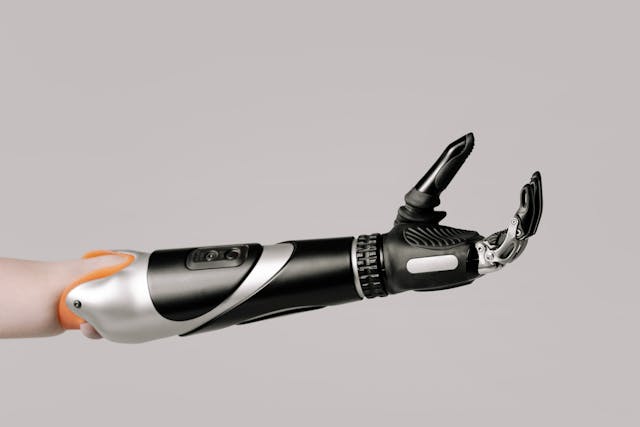
For many children, a prosthetic limb is not just a medical device—it becomes a part of their identity. Encouraging positive self-image and confidence helps children embrace their prosthetic and use it to their full potential.
Encouraging Independence and Self-Sufficiency
As children grow, they should feel confident using their prosthetic limb without constantly relying on parents or caregivers. Encouraging small, daily tasks, such as putting on their prosthetic, adjusting straps, or cleaning it themselves, builds a sense of independence.
Parents can also set small challenges—like tying shoelaces, opening a jar, or riding a bicycle—to help children build strength and adaptability with their prosthetic.
At Robobionics, we provide guidance and training to help children become comfortable and independent with their prosthetics, so they feel in control of their daily life.
Helping Your Child Talk About Their Prosthetic
Some children may feel self-conscious or shy about their prosthetic, especially in school or social settings. Teaching them how to confidently talk about their limb can help them feel more comfortable when answering questions from friends or classmates.
Encourage responses like:
💬 “This is my prosthetic hand. It helps me do everything I love!”
💬 “I have a cool robotic leg that helps me run and play sports!”
By normalizing their prosthetic, children become more comfortable and confident, making social interactions easier and more positive.
Finding Role Models and Peer Support
Connecting with other children and adults who use prosthetic limbs can be incredibly inspiring. Seeing role models who are athletes, artists, musicians, or professionals with prosthetics can motivate children to see their limb as a strength, not a limitation.
Joining support groups, attending workshops, or participating in adaptive sports can help children build friendships and confidence in a supportive environment.
At Robobionics, we encourage families to engage with the larger prosthetic community, where children can learn, grow, and feel supported.
9. Adapting to an Active Lifestyle with a Prosthetic Limb
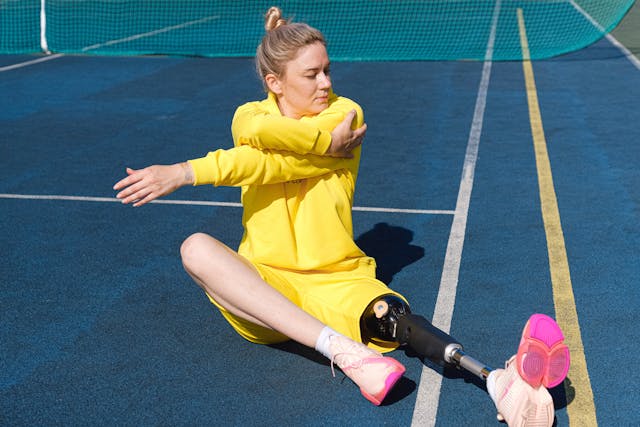
Children are naturally active, and their prosthetic limb should support their movement, hobbies, and adventures. Choosing a prosthetic that matches your child’s activity level helps them stay engaged in sports, school activities, and playtime.
Choosing the Right Prosthetic for Sports and Play
If your child loves sports, consider a prosthetic that offers extra flexibility and durability. High-performance prosthetics, such as running blades, energy-return feet, or specialized gripping attachments, make sports and physical activities easier and more enjoyable.
For children with upper-limb prosthetics, specialized attachments can help with cycling, swimming, or playing musical instruments. Prosthetics should be designed to encourage movement, not restrict it.
At Robobionics, we create custom prosthetic solutions for children who need sport-specific designs, ensuring they can participate fully in any activity they love.
Incorporating Fun into Prosthetic Training
Adjusting to a prosthetic limb should not feel like a chore or medical task—it should be fun! Many rehabilitation programs now include games, virtual reality, and interactive activities to make prosthetic training enjoyable.
For example, video games that respond to muscle signals help children learn how to control a myoelectric prosthetic hand in a playful and engaging way.
At Robobionics, we integrate gamified rehabilitation into prosthetic training, making it easier for children to adapt, practice, and improve their prosthetic use through fun activities.
Encouraging an Active and Social Lifestyle
Children with prosthetics should be encouraged to participate in activities just like their peers. Whether it’s playing on the playground, learning a new sport, or joining an art class, their prosthetic should be seen as an enabler, not a barrier.
Parents can help by finding inclusive activities and adaptive programs, ensuring their child gets the opportunity to explore and develop new skills.
10. The Future of Pediatric Prosthetics: What’s Coming Next?
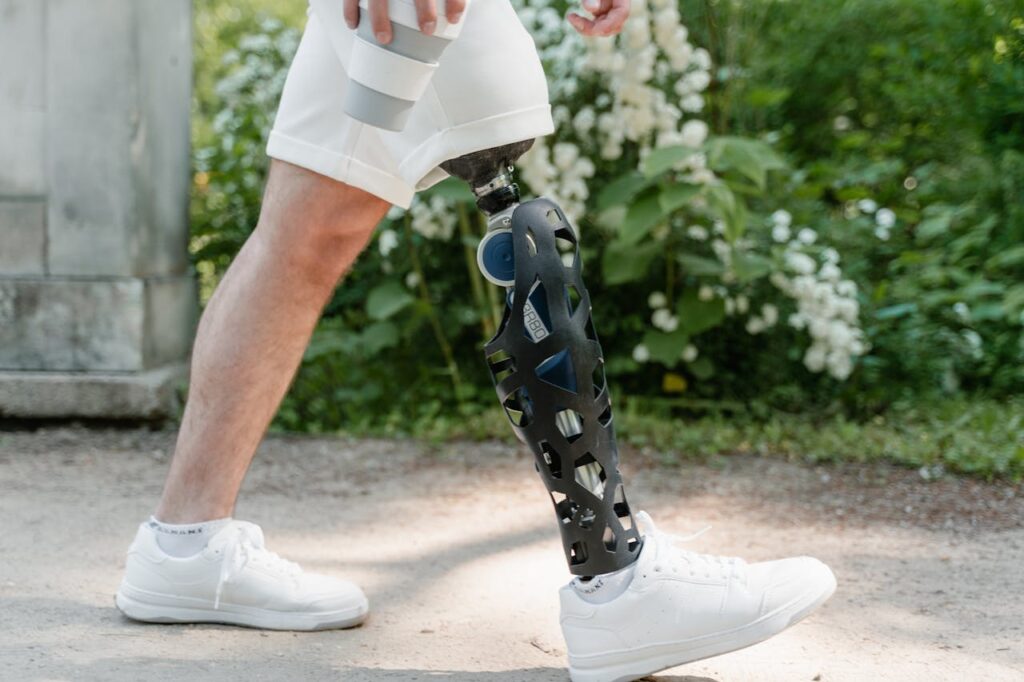
Prosthetic technology is advancing rapidly, and the future promises even better solutions for children.
Smart Prosthetics with AI and Sensory Feedback
New developments in artificial intelligence (AI) and sensory technology are making prosthetic limbs more responsive and intuitive. Future prosthetics may include:
1. Sensors that allow children to “feel” textures and pressure.
2. AI-powered limbs that automatically adjust grip strength for different objects.
3. Voice-controlled prosthetics that respond to simple commands.
At Robobionics, we stay ahead of these advancements, ensuring that children in India and around the world get access to the latest innovations in prosthetic care.
More Affordable and Accessible Prosthetic Solutions
One of the biggest barriers to prosthetic care is cost and availability. The rise of 3D-printed prosthetics has made replacement limbs more affordable and quicker to produce, ensuring more children have access to prosthetics when they need them.
We are committed to expanding access to 3D-printed and modular prosthetics, making sure no child is left without a limb due to financial constraints.
Prosthetics That Grow with Your Child
In the near future, prosthetics will become even more adaptable, with designs that expand, adjust, and modify themselves as the child grows. This means fewer replacements and better long-term usability.
At Robobionics, we are constantly innovating and improving pediatric prosthetic designs, ensuring that children always get the best, most advanced, and most comfortable options available.
Final Thoughts: Ensuring the Best Fit for Your Child’s Future
A child’s prosthetic should always fit comfortably, support their activities, and adapt to their growth. While younger children may need a new prosthetic every 6-12 months, older children and teens may require replacements every 12-24 months.
By choosing high-quality, adjustable, and cost-effective prosthetics, parents can ensure that their child always has the best possible mobility and confidence.
At Robobionics, we are dedicated to providing durable, affordable, and innovative prosthetic solutions that grow with your child.
🚀 Need a prosthetic replacement for your child? Book a free consultation with our experts today!
💡 Have questions about pediatric prosthetics? Contact us now to explore the best options for your child’s needs!




Pingback: The Hidden Costs of Vehicle Crashes Involving Children: How to Ensure You’re Fully Compensated - Kane Personal Injury
Pingback: Los costos ocultos de los accidentes de vehículos que involucran a los niños: cómo asegurarse de que está completamente compensado - Kane Personal Injury